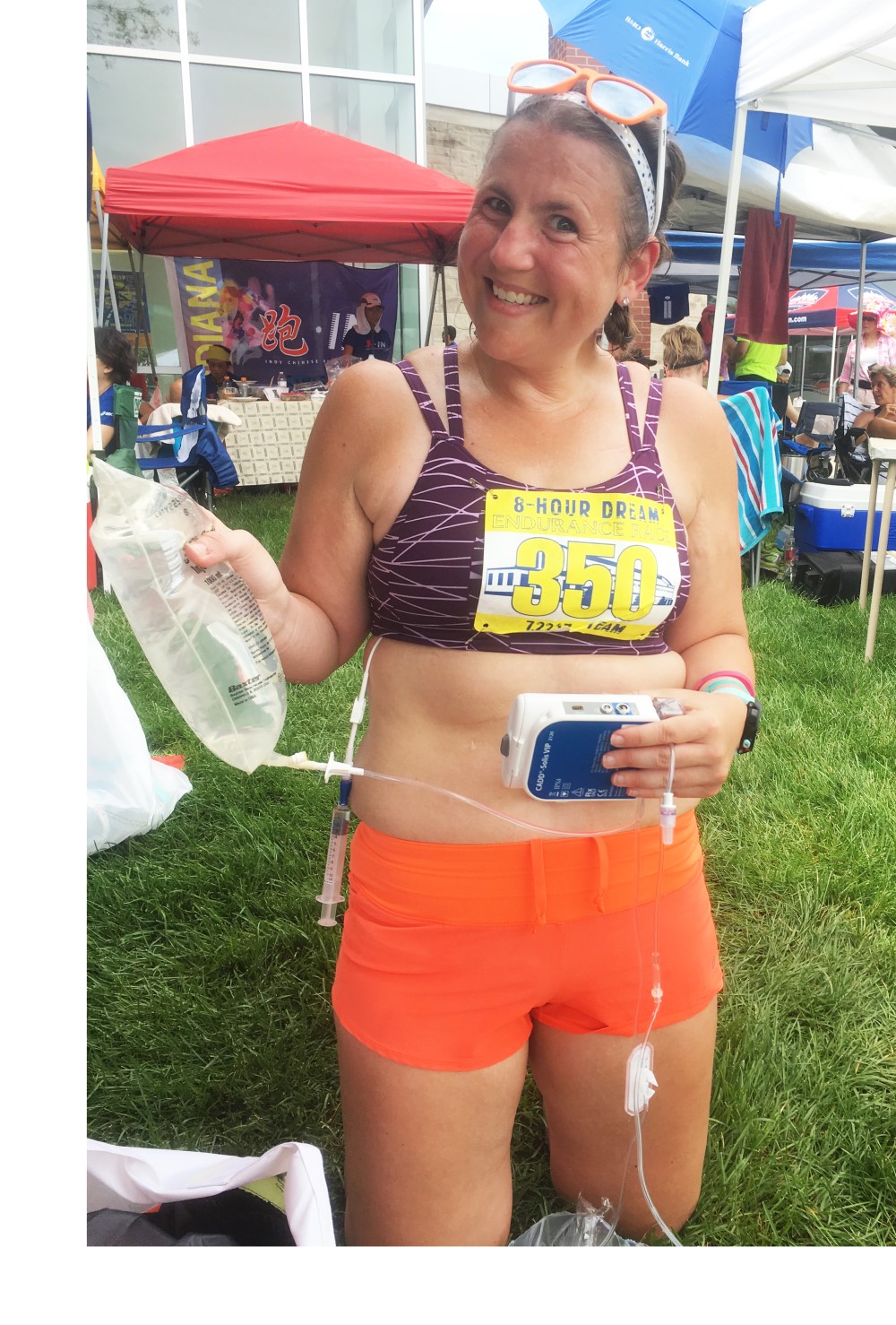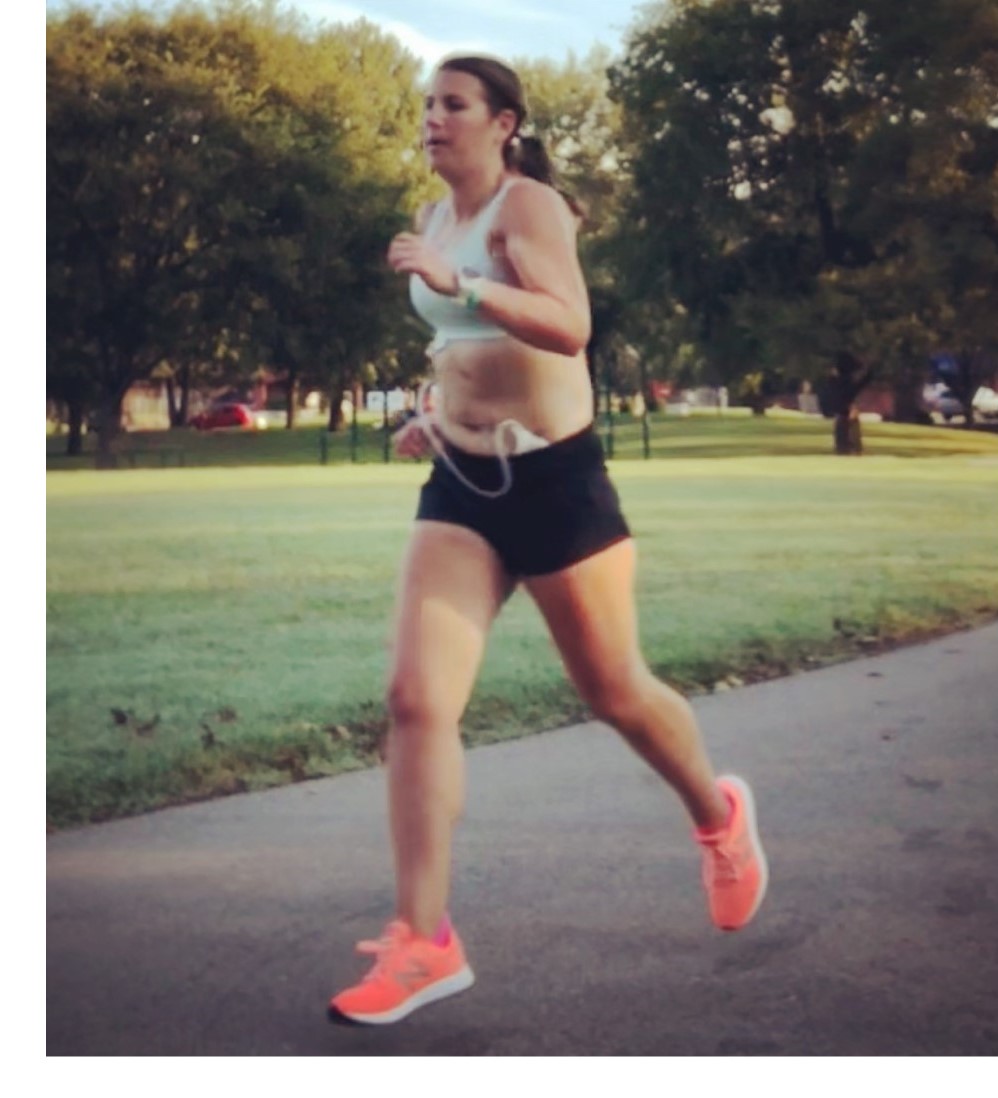Emma, Marathon Runner, Associate Research Professor on PN
 As a child, I suffered from repeated bouts of vomiting. But I was a happy kid who thrived and didn’t look sick. My growth was on track, so my doctor convinced my parents there was nothing to worry about—I was just a pukey kid. There were times where I was unable to keep any food down and my weight would drop, but just as quickly as those flares came, they disappeared into the background of my busy life. I got used to the wax and wane of my GI symptoms. Ultimately, I was diagnosed with cyclic vomiting syndrome.
As a child, I suffered from repeated bouts of vomiting. But I was a happy kid who thrived and didn’t look sick. My growth was on track, so my doctor convinced my parents there was nothing to worry about—I was just a pukey kid. There were times where I was unable to keep any food down and my weight would drop, but just as quickly as those flares came, they disappeared into the background of my busy life. I got used to the wax and wane of my GI symptoms. Ultimately, I was diagnosed with cyclic vomiting syndrome.
This pattern continued over and over again, until the fall of 2011 when I had a flare with vomiting that didn’t end. My gastrointestinal system had stopped working normally. Anytime I ate or drank anything, I would vomit, and after losing more than 30 pounds in a little over a month, I was started on parenteral nutrition (PN). For the next year, I really struggled with accepting that as my new normal. The relentless nausea and vomiting had plagued me for as long as I could remember, but it always went away, and I was sure it would that time, too. Unfortunately, it did not.
For the past 10 years, PN was my main source of nutrition. My diagnosis has morphed from cyclic vomiting syndrome to gastroparesis and now to chronic intestinal pseudo-obstruction. I believe that whatever we want to call it, the etiology of my disease has been there since I was a child—it has just evolved over time. I have undergone four major GI surgeries including a pyloroplasty, partial gastrectomy with intestinal reconstruction, completion gastrectomy, exploratory laparoscopies, and a small bowel resection for intussusception. This hasn’t been easy, but I try to frame all of it in a positive light and accept it as my normal.
 I don’t let needing PN stop me from achieving my goals. I graduated with my PhD in 2013, just two years after my life flipped upside down. I have a full-time job and consider myself professionally successful. One of the things that has been instrumental for my mental health and has helped me accept all of this as my new normal is running. Before getting sick, I was an avid, yet average, recreational runner. After recovering from the initial shock of being sick, I began to get back to real life and back to running. At first, I couldn't even walk a mile without stopping to rest. Gradually, I built up my fitness, and in 2014, I ran two marathons with the assistance of IV fluids during the race. I have had a lot of ups and downs with my health and running, but no matter how bad I feel, I always try to stay in the running game. It’s hard—but I think it’s even harder to get back in shape after stopping. It’s easy to fall into a downward spiral of living the sick life. I have always been scared of that happening to me.
I don’t let needing PN stop me from achieving my goals. I graduated with my PhD in 2013, just two years after my life flipped upside down. I have a full-time job and consider myself professionally successful. One of the things that has been instrumental for my mental health and has helped me accept all of this as my new normal is running. Before getting sick, I was an avid, yet average, recreational runner. After recovering from the initial shock of being sick, I began to get back to real life and back to running. At first, I couldn't even walk a mile without stopping to rest. Gradually, I built up my fitness, and in 2014, I ran two marathons with the assistance of IV fluids during the race. I have had a lot of ups and downs with my health and running, but no matter how bad I feel, I always try to stay in the running game. It’s hard—but I think it’s even harder to get back in shape after stopping. It’s easy to fall into a downward spiral of living the sick life. I have always been scared of that happening to me.
I wouldn’t wish this life on anyone, yet I don’t feel sorry for myself. Having GI issues and relying on PN has introduced me to so many wonderful people that I would have never had the opportunity to meet. A few years ago, I was on Instagram searching hashtags like PN, EN (enteral nutrition), tube feeding, IV nutrition, and other similar terms. I wondered what a patient or parent of a child new to PN would come across when trying to find out what life on PN would be like. I was so disappointed that all of the images I found were “sick” pictures. There was a woman in a hospital bed with PN, a sick boy lying on a couch, etc. So I decided that I was going to flood social media with pictures of me doing normal things (and many times, that’s running). Anytime I post a picture on social media, I tag it with #tpnstrong to show people new to PN that you can live a full life and thrive on PN. Sharing my story with others and giving those on PN hope for a return to a new normal always feels good.
Read more patient stories.